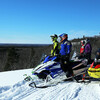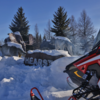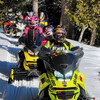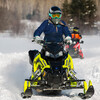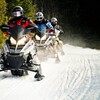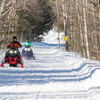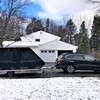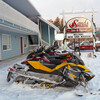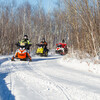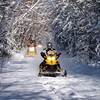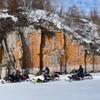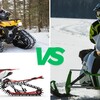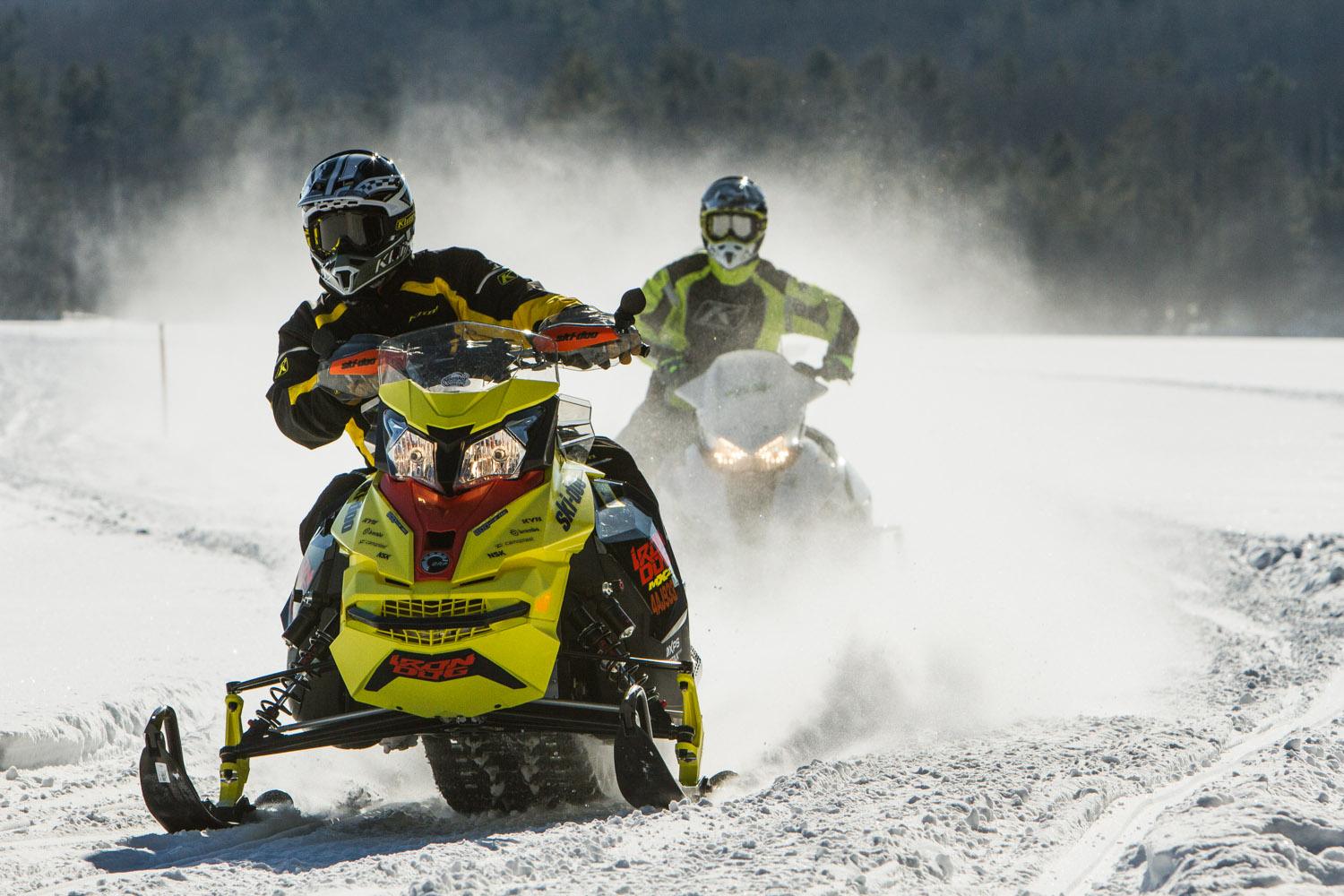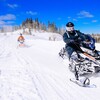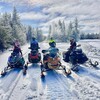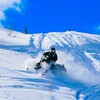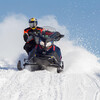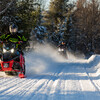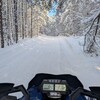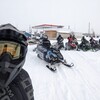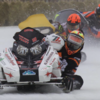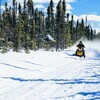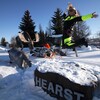
Please note this page may no longer be up to date. For new stories about Northern Ontario visit us here.
Ontario Snowmobilers in for a Great Season Ahead?
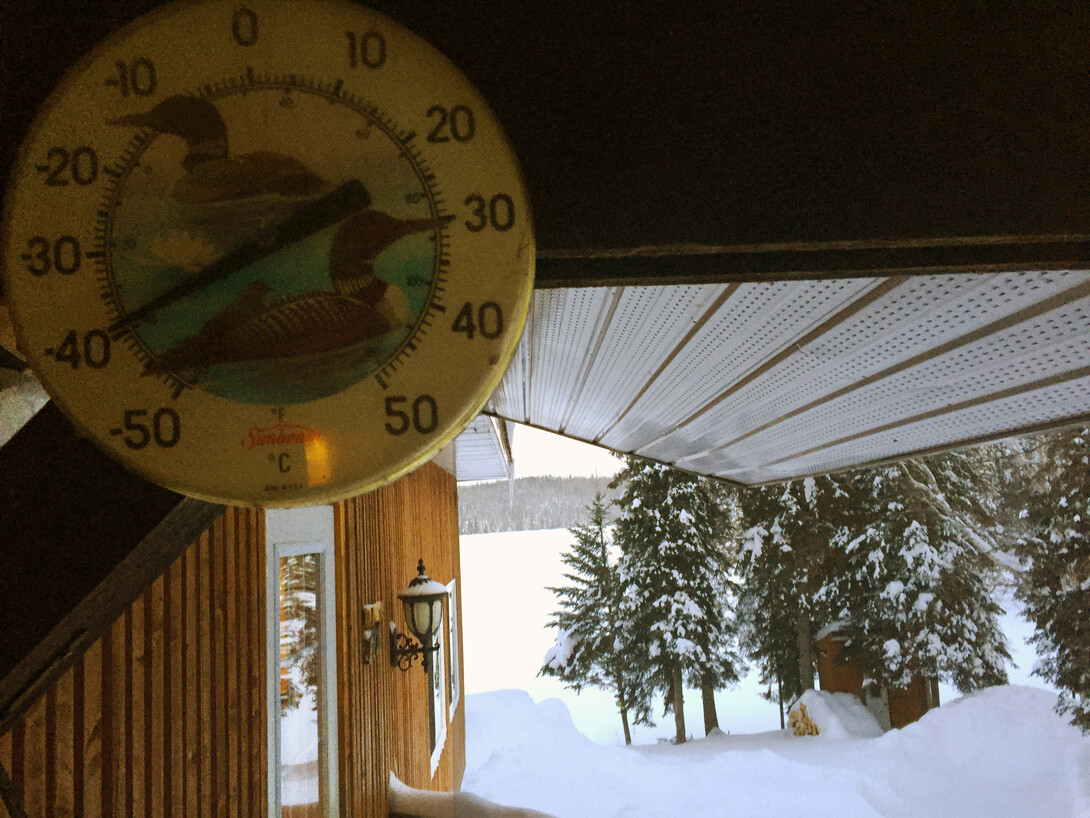
Update December 2021 - What is Ontario gonna get this year? Check out our predictions for the 2022 snowmobile season!
They say in order to know where you’re going, you have to know where you have come from. I agree with this statement; I come from Northern Ontario, a place where winter and snowmobiling are guaranteed.
However, if you live and ride anywhere south of Muskoka, you’re shaking your head and saying a true Canadian Winter with great snowmobiling is never guaranteed—at least not now, after last winter’s fiasco.

What will this winter hold for us? Let’s find out.
In last year’s winter prediction article, I warned everyone that we would be in for a wild ride; after all, we were experiencing a record-setting El Niño—stronger than the previous record set in 97-98, which resulted in ice storms causing $5 billion in damages to infrastructure in Ontario and Quebec.
I would never have expected that last winter would bring with it so many unusual weather shifts and inconsistencies. It wasn't just one part of the province, either; everyone was affected. While the South experienced a nonexistent winter, much of the North reported some of the worst ice conditions in decades, making swamps, lakes and rivers extra challenging to navigate and maintain. The snow and its depth varied widely by region, making it a challenge to find consistent conditions between communities. This was last year’s reality, yet we still rode!

With all that in the past, all we can do now is look forward to the future. We just endured a spiritless winter, and we as snowmobilers won't accept another one; luckily for us, it looks like Old Man Winter and Mother Nature agree, and are going to deliver wintertime bliss.
What the Experts are Saying
According to Trevor Hawdew, an agroclimatic specialist with Agriculture Canada, Ontario has a problem: It has barely rained for three months. Much of the province—as far east as Ottawa, south-west to Windsor and north to Sudbury and North Bay—has had an incredibly dry spring and summer. You will recall that over the last few months when it did rain it rained furiously hard, so hard in fact that farmers reported the dry ground didn't even have a chance to absorb the much-needed rain, which instead ran off.

Even though it has been one of the driest summers on record, the Great Lakes effect snow machine is holding record amounts of H20; in fact, water levels have risen above those of 20-some years ago. This has made cottagers, marinas and boaters alike very happy.

Yamaha Waverunner just west of Mattawa, Ontario
“Water, Water Everywhere” is the title of an article by David Foote published on Parrysound.com and in this article, David provides some interesting statistics from the US Army Corps of Engineers who monitor the Great lakes on a daily basis. As of Aug 12, 2016, the level of Lake Huron/Georgian Bay was 580.06 feet (176.802 m) above sea level. Compare this to historical data, and the lakes are close to where they were in 1984 (580.84 feet). The water level hasn't been this high since 1998, which was the tail end of a period of high lake levels; since ’98, the lakes have experienced a slow decline in water quantity.

The heat and dryness were still in full effect when the media and weather experts started warning us that the forthcoming winter was going to be savage, the main focus of the reports was that La Niña was brewing.
What Will La Niña Bring?
It's important to understand the difference between La Niña and El Niño. Right now El Niño is transitioning to La Niña, and the water in the South Pacific near the Equator is cooling off. Why does this matter? Because it will change the average position of the jet stream this winter. The jet stream guides storm systems around the globe, ultimately determining where the heaviest snow falls in any given winter season.

Last winter in Ontario, as noted above, was dominantly controlled by one of the strongest El Niños on record. Let’s take a look and compare two maps that demonstrate the difference and effect it has on our snowmobile seasons.

The location of the Polar Jet Stream in the map above gets me excited. It correlates directly to the following map, produced by AccuWeather.com, in which meteorologists predict that we will not only see heavy snowfall, but also Polar Vortex temperatures such as we experienced during the winters of 2013-2014 and 2014-2015.

Map courtesy of Accuweather
Tried Tested and True

Map courtesy of Farmers' Almanac
This theory is supported by the Old Farmer’s Almanac, which boasts 80% accuracy in the prediction of seasonal weather. It released preliminary forecasts for the winter of 2016-2017 in mid-August. Using its proprietary prediction model, the Almanac predicts: “Winter will be colder than normal, with above-normal precipitation and snowfall.” It’s even been predicted that the GTA area will be slammed by a major snowstorm on December 8, 2016.

Prediction
Unlike last year, when there was much competing and contradicting information circulating, the Winter of 2016-2017 is looking like it’s going to be a winner. So with this recap in mind, I think you will agree with me that the odds are good it’s going to be one great Ontario snowmobile season!
- It's been a great summer for outdoor fun like boating, motorcycling, camping and of course BBQs, not so much for gardening agriculture and your lawn! We've all had enough of the relentless heat.
- The Great Lakes’ water levels are up, way up, and the water is warm. With the right winds and temps, we could see lake-effect systems develop, dropping gargantuan amounts of snow in the right areas!
- The Farmer’s Almanac reports: “the coldest periods will be in early to mid-January, late January, and late February, with the snowiest periods in mid- and late December, early January, and mid-February.”
- I'll be riding a 2017 Yamaha Sidewinder BT-X 153 this winter, a sled I know is bred to #ConquerSnow
- El Niño is over and La Niña is back, the jet stream is tracking to be in the right place at the right time, bringing us both the cold and snow we need when we need it!

A reminder that OFSC trail permits are being sold only online this year and are available starting October 1.
See you all at the Toronto International Snowmobile, ATV & Powersports Show in October!
Recommended Articles

The Complete List of Snowmobile Events in Ontario 2025-2026

The Best Snowmobile-Friendly Lodges
Snowmobiling Winter Weather Forecast 2025-2026

I Rode the Explorers Snow Tour in Ontario and Here’s What It Was Like

Why Ontario is One of the Best Snowmobile Destinations in the World
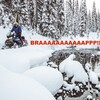
11 TikToks That Prove Ontario is the Best Place To Go Snowmobiling

5 Weekend Snowmobile Getaways Near the GTA
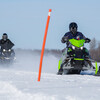
31 Ways To Get In The Know About Snowmobile Trail Riding in Ontario

A Beginner's Guide to Snowmobile Lingo

